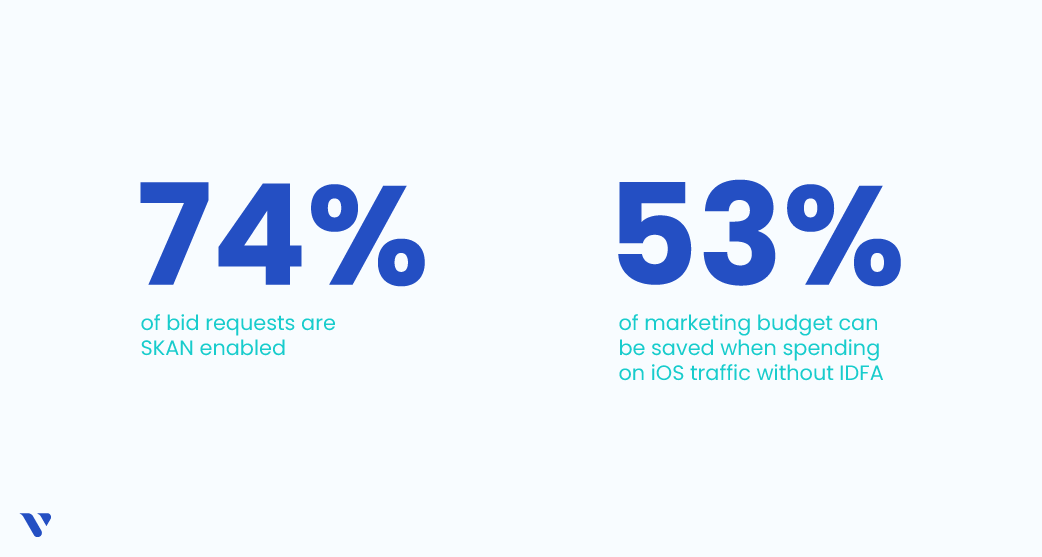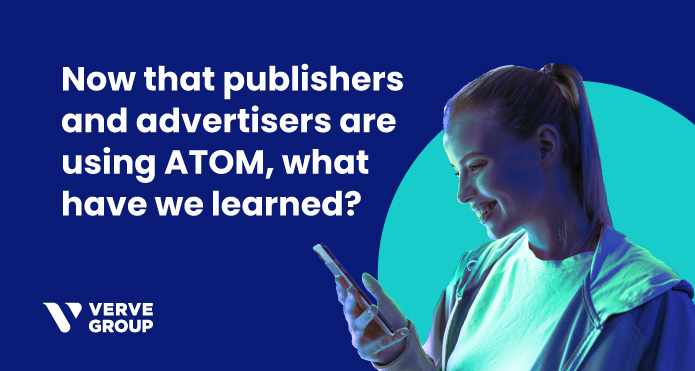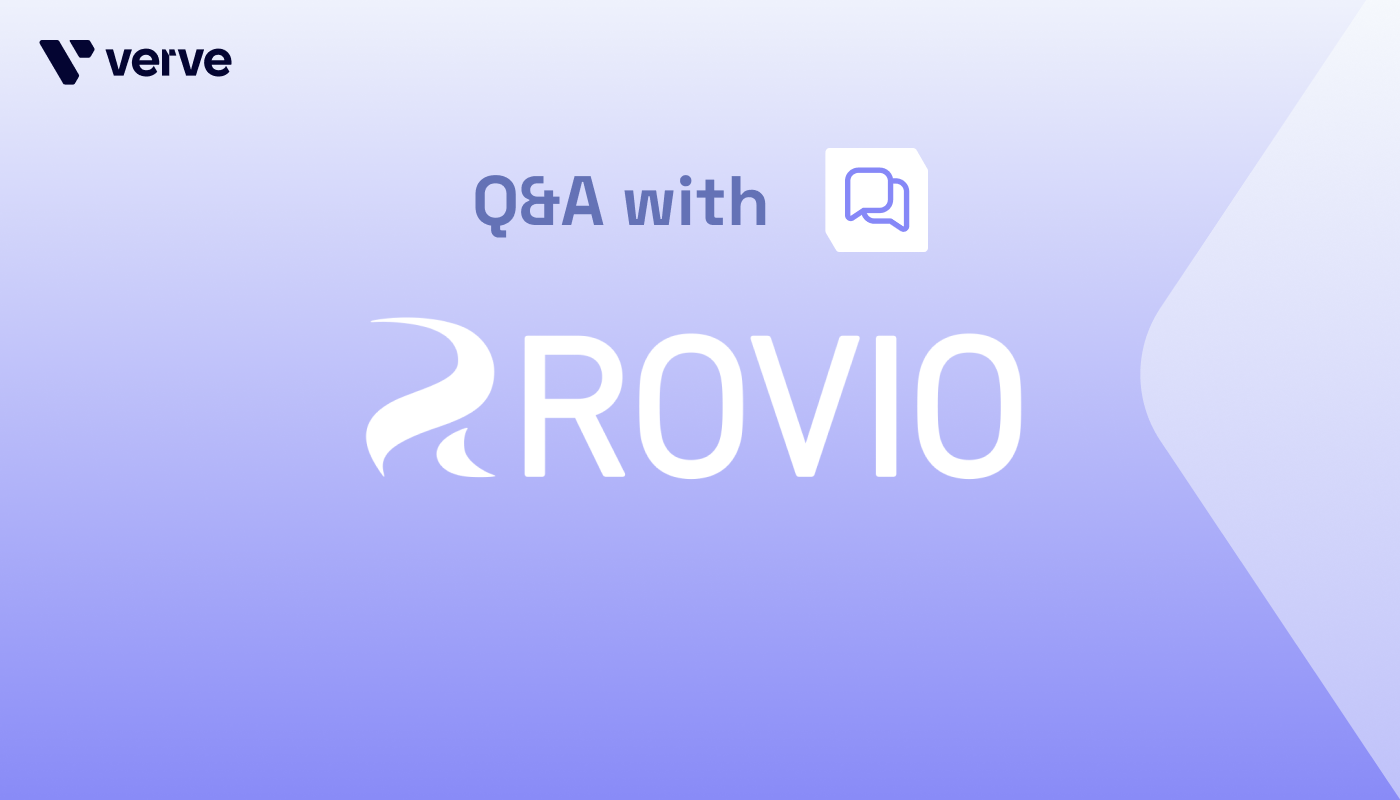In 2021, Verve launched Anonymized Targeting on Mobile — ATOM. In response to GDPR and Apple’s new privacy strategy on iOS, ATOM was designed with the intent of providing a mobile-first advertising solution focused on machine-modeled behavioral and first-party contextual data. With ATOM, publishers can continue to show relevant ads to their users and offer advertisers to accurately reach their target audiences without IDFA.
Now that ATOM has moved on from being our baby to being an ad-tech toddler, we have already recognized several accomplishments, milestones, perspectives and learnings.
Mindsets are changing
While Google recently announced (again) that cookies won’t crumble just yet, ATOM has proven to publishers and advertisers, alike, the necessity to adapt to a world without identifiers. Consumers have more control, choosing what kind of data is collected and for which purposes–not only under GDPR standards, but if they use an iOS device, for global standardization.
Not using IDs for addressing the right audiences is now considered common practice by most advertisers. This is necessary, as 72% of iOS traffic hitting Verve’s mobile ad exchange is currently sent without an ID.

Budgets are shifting
While acceptance and adoption of ID-less solutions has surged, some brands have chosen the “easy route” by shifting budgets to Android. By nature, brands operating in verticals like automotive with little access to their own first-party data will rely on third parties to fill that gap (see our Media Planner’s Strategy Guide for more details).
However, chasing IDs is not going to last in the long run, and most brands might not even need targeting granularity down to a specific user.
Yet, maintaining addressability remains key. And alternative solutions that offer solutions at scale for segment- or cohort-based targeting such as ATOM will deliver the same — if not better — results for brand campaigns. In addition to that, these new approaches also offer improvements to other factors such as taking into consideration the environments in which brands place their ads, as well. Brand safety is a big concern with modern day marketing — one which Verve’s Moments.AI™ tackles by identifying threats and qualifying content in real time.
Performance measurement is calling
Now that advertisers have adopted alternative targeting strategies, voices for measurement and attribution without IDs are becoming louder. How can ad performance be measured without identifiers?
There are a variety of ID-less measurement options to consider.
– Media Mix Modeling
Media mix modeling is a statistical method based on an extensive set of historical data. This method is great for forecasting, but has its weakness when it comes to measuring the impact of advertising for a product launch when no historical data has been recorded. To inform media mix modeling, campaigns are often turned off entirely to arrive at a baseline for measurement. However, this practice of turning off any marketing activity entirely is often not feasible for advertisers.
– Incrementality
Incrementality studies can range from “simple” A/B testing to testing by geography (e.g., promoting a product launch in one region while letting it run by itself in another). These options, however, become complex when many different messages are being tested in parallel.Marketing impact can also be measured without identifiers in consumer surveys or panels. This method can grant insights into consumer demographics, share of voice, purchase intent, and more. However, results rely on active survey or panel participation. An automated algorithmic based approach to incrementality is casual inference. By adding all possible factors to the equation, these models can granularly analyze which marketing activity leads to an increase in conversion results, and which marketing practice might lead to cannibalization.
– Cohort-based measurement.
Cohort-based measurement finds its application with solutions such as data clean rooms or contextual advertising. While data-clean rooms bundle different advertisers’ and publishers’ user data within a black box, any participant can easily send queries to retrieve cohort-based insights. At Verve, we create lookalike cohorts for traditional ad campaigns, based on the context into which an ad is embedded. By taking into consideration the environment in which high propensity audiences are navigating, we can add the brand safety factor back into the picture.
Running a campaign for trailblazers for a major international tech company, we found a 300% uplift in CTR and a decrease of 96% in brand safety risk when targeting against contextual audiences, compared to traditional campaigns. An assortment of different levers, from brand safety risk to recency score help us optimize our campaigns, we can tailor any campaign towards the right target audiences. And we are not stopping here.
What’s next?
Verve sees a world without identifiers as being the norm instead of the exception.
- Media and Games Invest, Verve’s parent company, recently added the mobile game studio AxesInMotion to its portfolio. In a short time, we have learned how to make meaningful connections with (hyper-)casual gamers. Looking toward the future, we will be able to leverage AxesInMotion’s rich first-party data for building sophisticated AI models for ID-less targeting and attribution solutions while also deepening our ability to segment mobile apps for contextual targeting.
- Verve recently invested in Dataseat, a London-based company that built the world’s first fully transparent user acquisition DSP based entirely on contextual signals, without any reliance on device IDs or user profiling.
Above all else, the people who comprise Verve are focused on sharing new and exciting ways to show where and how a world without identifiers will span across various operating systems and environments to enable anonymized behavioral targeting and measurement.
If you are interested in learning more about our contextual and ID-less capabilities, reach out to us.








